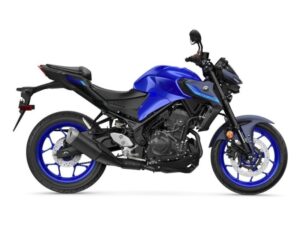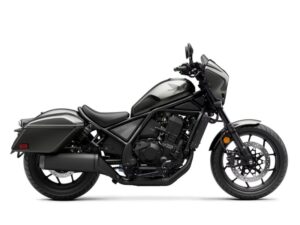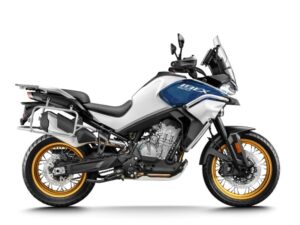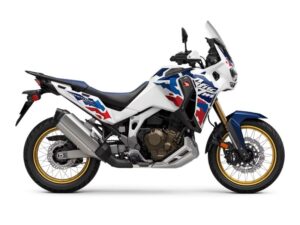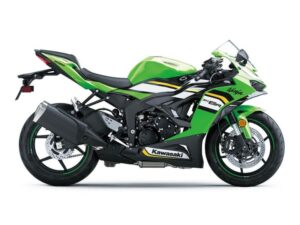How to Choose the Right Motorcycle for Your Riding Needs – 12 Must-Know Expert Tips
Introduction: Why Motorcycle Choice Matters More Than You Think
Buying a motorcycle isn’t just about two wheels and an engine—it’s about fitting a machine to your lifestyle, comfort, skill level, and personal taste. The right bike feels like an extension of your body. It responds to your movements with ease, accommodates your needs without fuss, and makes every ride a joy.
From city commutes and weekend cruises to backcountry trails and high-speed thrills, the options are as diverse as the riders themselves. The best motorcycle is the one that fits your world. This guide gives you the clarity and confidence to find it. How to Choose the Right Motorcycle for Your Riding Needs
Determine Your Primary Riding Purpose
A motorcycle’s utility should match your intended use case. Here are the key categories:
1. Daily Commuting and Urban Travel
If you’ll be weaving through traffic or parking in tight spaces, you’ll need a nimble, efficient ride. Urban bikes focus on simplicity and maneuverability.
Recommended Features:
Compact design for tight traffic
Good fuel economy (50–70 mpg)
Easy clutch and throttle control
Top Models:
Yamaha MT-03: A lightweight 321cc twin with modern styling and ABS.
Honda CB500F: Offers upright ergonomics and strong mid-range power.
CFMoto 300NK: Stylish and affordable with great tech like TFT display.
Kawasaki Z400: Smooth power curve, great brakes, and user-friendly ergonomics.
Why it matters: Daily commuters appreciate comfort, low cost of ownership, and ease of maintenance.
2. Weekend Cruising and Light Touring
If scenic routes and open highways appeal to you, cruisers and light touring bikes are your best bet. How to Choose the Right Motorcycle for Your Riding Needs
Key Traits:
Low seat height
Relaxed riding posture
Mid to large engines (500cc–800cc)
Top Picks:
Honda Rebel 1100T: Soul of a bagger with hard saddlebags and a sleek front fairing.
Yamaha Bolt R-Spec: V-twin engine and laid-back vibe.
CFMoto 700 CL-X Heritage: Retro-modern design with upright ergonomics.
Kawasaki Vulcan S: Custom-fit ergonomics for different body types.
3. Long-Distance Touring
Cross-country adventures demand comfort, storage, and all-day rideability. How to Choose the Right Motorcycle for Your Riding Needs
Must-Have Features:
Large fairings and windshields
Saddlebags or built-in luggage
Cruise control and heated grips
Engine displacement of 900cc+
Top Touring Motorcycles:
Honda Gold Wing: Often considered the king of touring motorcycles.
Yamaha FJR1300ES: Sport-touring at its best—shaft-driven, comfy, and fast.
Kawasaki Versys 1000 LT: Combines power with upright ergonomics.
CFMOTO Ibex 800 Touring: Great value ADV-touring bike with modern tech.
Why it matters: Tourers are perfect for multi-day trips, offering unmatched comfort and luggage capacity.
4. Adventure and Dual-Sport Riding
Love the idea of on-road and off-road exploration? Dual-sport and adventure motorcycles offer unmatched versatility. How to Choose the Right Motorcycle for Your Riding Needs
Essential Features:
Tall suspension
Long travel forks
Protective skid plates
Wire-spoke wheels (for rugged use)
Top Adventure Bikes:
Honda Africa Twin: Ready for Dakar or your weekend trail.
Yamaha Tenere 700: Lightweight and highly capable off-road.
CFMoto Ibex 800 S: Well-equipped ADV at a mid-tier price.
Kawasaki KLR650: Iconic do-it-all bike with a loyal following.
5. Sport and Track Riding
Speed, performance, and sharp handling define this category. These bikes are best for experienced riders. How to Choose the Right Motorcycle for Your Riding Needs
Specs to Watch:
Fairing for aerodynamics
High-revving engines (600cc+)
Sporty geometry
Top Track/Performance Models:
Honda CBR600RR: Precision meets durability.
Yamaha YZF-R6: Often seen on race tracks.
CFMoto 700 CL-X Sport: A unique blend of performance and style.
Kawasaki Ninja ZX-6R: A longtime favorite for aggressive riding.
Assessing Your Riding Experience
Beginner Riders
You’re learning throttle control, cornering, and traffic awareness. A forgiving motorcycle will make learning smoother and safer. How to Choose the Right Motorcycle for Your Riding Needs
Best Beginner Picks:
Yamaha R3
Honda Rebel 300
CFMoto 300SS
Kawasaki Ninja 400
Traits to prioritize:
Lightweight (under 400 lbs)
Low seat height
Predictable throttle
Experienced Riders
You’ve mastered basic skills and want more power or specialized features.
Great Choices:
Honda CB650R: Sporty yet comfortable.
Yamaha MT-09: Triple-cylinder torque machine.
CFMoto 800NK: Exciting performance at a competitive price.
Kawasaki Z900: Sharp naked bike with all-day capability.
Engine Sizes and What They Mean
| Displacement | Skill Level | Use Case | Examples |
|---|---|---|---|
| 125–300cc | Beginner | City riding | Yamaha MT-03, Honda Rebel 300 |
| 400–500cc | Intermediate | Commuting, learning | Kawasaki Z400, CFMoto 450NK |
| 600–800cc | Experienced | Sport/touring | Yamaha MT-07, Honda CBR650R |
| 900cc–1300cc | Advanced | Long-distance/touring | Honda Africa Twin, Gold Wing |
| 1300cc+ | Expert | Long tours/highways | Yamaha FJR1300, Honda Gold Wing |
Cargo and Storage Needs
Touring Features to Look For:
Saddlebags or panniers
Rear cargo racks
Tank bags
Windshields
Maintenance and Reliability
Low-Maintenance Options
Honda and Yamaha are known for long-term reliability and ease of servicing.
CFMoto offers great value but may require more niche service access.
Kawasaki balances performance and dependable build quality.
Budgeting: Upfront and Hidden Costs
Buying a bike is just the start. Here’s what to expect:
Motorcycle Price Ranges
| Category | Price Range |
|---|---|
| Entry-Level | $4,000–$7,000 |
| Mid-Range | $7,000–$12,000 |
| High-End | $12,000+ |
Additional Costs
Riding Gear: $800–$1,500 (helmet, gloves, jacket, pants, boots)
Insurance: $200–$1,000/year (varies by model, age, location)
Registration/License Fees: $50–$200
Maintenance: Oil changes, tires, chains—expect ~$400–$800/year
Safety Features You Shouldn’t Skip
Modern motorcycles are equipped with rider-assist systems to help you stay safe.
Essential Features:
ABS: Prevents wheel lock-up
Traction Control: Limits slip on wet surfaces
Ride Modes: Rain, Road, Sport, etc.
Slipper Clutch: Prevents rear-wheel lock on downshifts
Cornering ABS (high-end): Adjusts braking force while leaning
Ergonomics: Comfort = Control
Your bike should match your height, weight, and flexibility.
Shorter Riders (<5’6”): Try Honda Rebel 300, Yamaha Bolt, CFMoto 300NK
Taller Riders (>6’0”): Africa Twin, Versys 1000, CFMoto Ibex 800
Average Build: Mid-range standards like the CB500F or MT-07 are flexible.
Test Tip: Always sit on a bike before buying. Ensure your feet touch the ground and your knees and arms feel relaxed.
Training and Licensing
Enroll in an MSF (Motorcycle Safety Foundation) course. Learn More >>
Pass your local DMV motorcycle test.
Get licensed and insured before hitting the road.
🛒 Where to Buy Your Bike
Authorized Dealerships
Pro Tip: Always schedule a test ride and check the dealership’s warranty and servicing options.
Frequently Asked Questions
1. What is the best motorcycle for beginners?
The Honda Rebel 300, Yamaha MT-03, and Kawasaki Z400 are all beginner-friendly bikes with manageable power and low seat heights.
2. Which motorcycle is best for long-distance touring?
The Honda Gold Wing and Kawasaki Versys 1000 are top choices, thanks to their comfort, power, and cargo space.
3. Are CFMoto motorcycles reliable?
Yes, CFMoto has been gaining a reputation for offering reliable motorcycles with modern features at an affordable price.
4. How much should I budget for a motorcycle?
A beginner motorcycle typically costs between $4,000–$7,000. Add around $1,000–$1,500 for quality gear and safety equipment.
5. What’s the difference between sport and naked bikes?
Sport bikes focus on performance and speed, with aggressive riding positions. Naked bikes offer a more relaxed, upright riding posture.
6. Do I need a special license to ride a motorcycle?
Yes, most regions require a motorcycle endorsement or specific license, which usually includes passing a written and riding test.
7. Can I ride a motorcycle on a car license?
In most U.S. states, no. You’ll need a motorcycle endorsement. However, laws vary—some countries allow low-cc bikes on a car license.
8. Are used motorcycles a good idea?
Yes, especially for beginners. Just ensure the bike has maintenance records and hasn’t been in serious accidents.
9. What’s the most comfortable motorcycle?
Comfort is subjective, but touring bikes like the Honda Gold Wing or Kawasaki Versys are built for all-day riding.
10. How long do motorcycles last?
With regular maintenance, motorcycles can last 50,000–100,000+ miles, especially Honda and Yamaha models.
Conclusion: Ride Smart, Ride Right
Choosing the right motorcycle starts with self-awareness: know your skill level, budget, and what you expect from your riding experience. Whether you’re zipping through city streets, embarking on epic road trips, or carving corners on a racetrack, the perfect motorcycle is out there waiting for you.
By using the insights and top models shared from leading manufacturers like Honda, Yamaha, CFMoto, and Kawasaki, you’re better equipped to make a smart, exciting, and satisfying choice.

